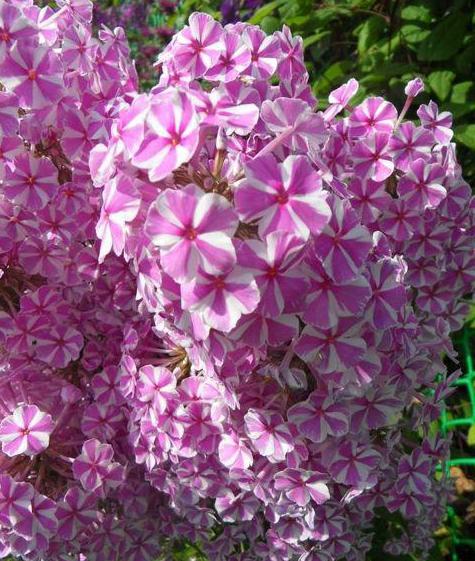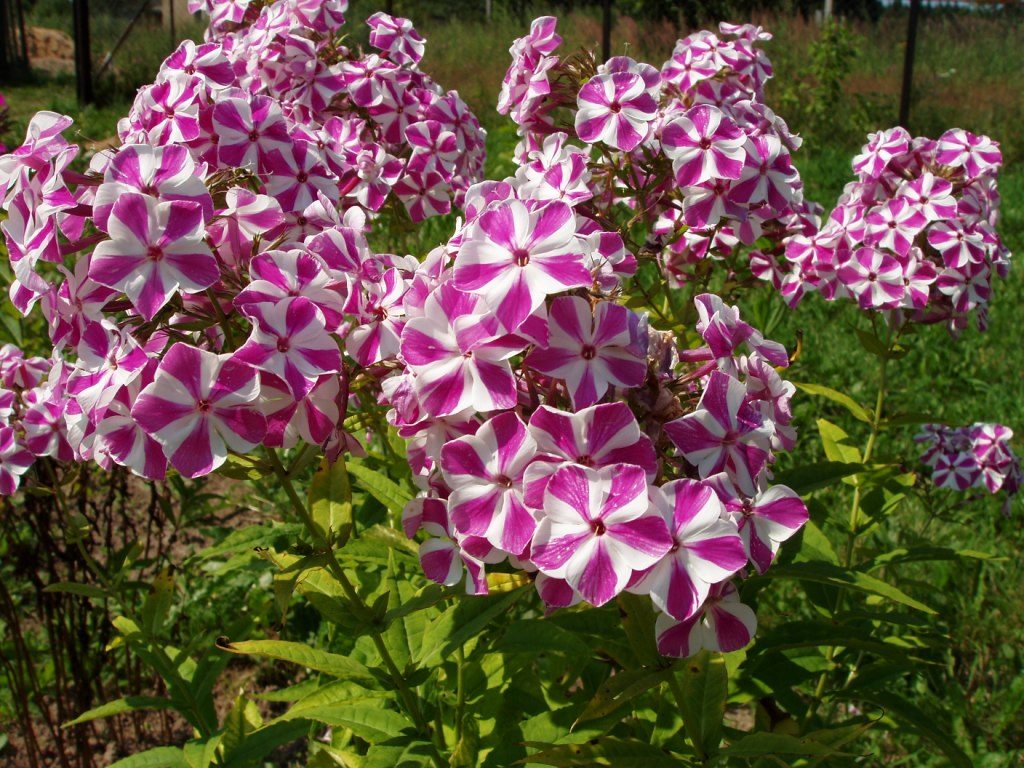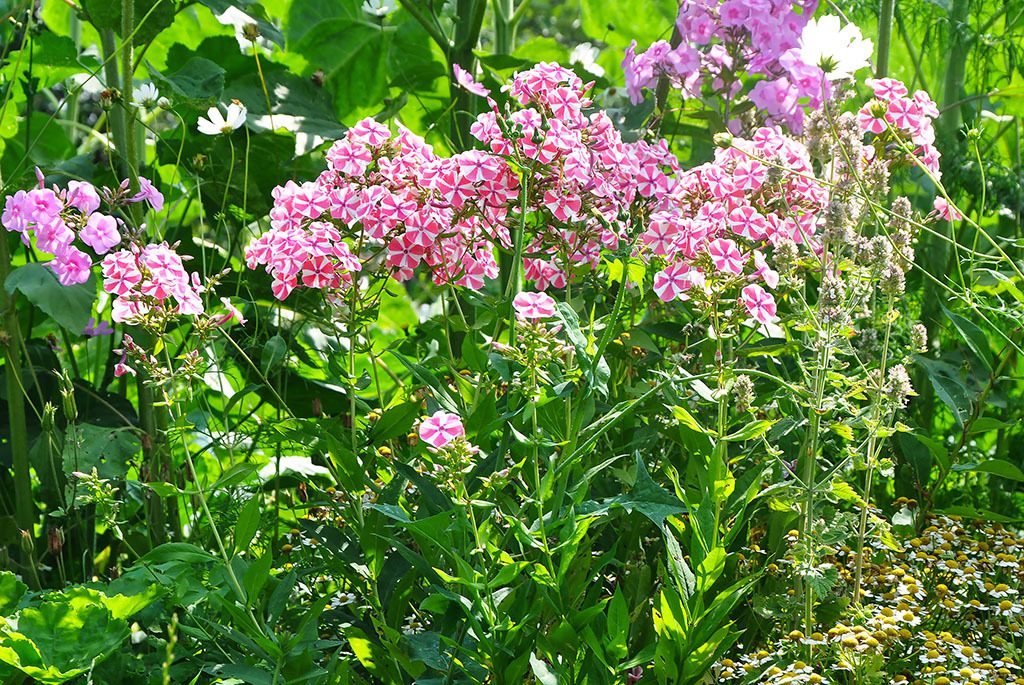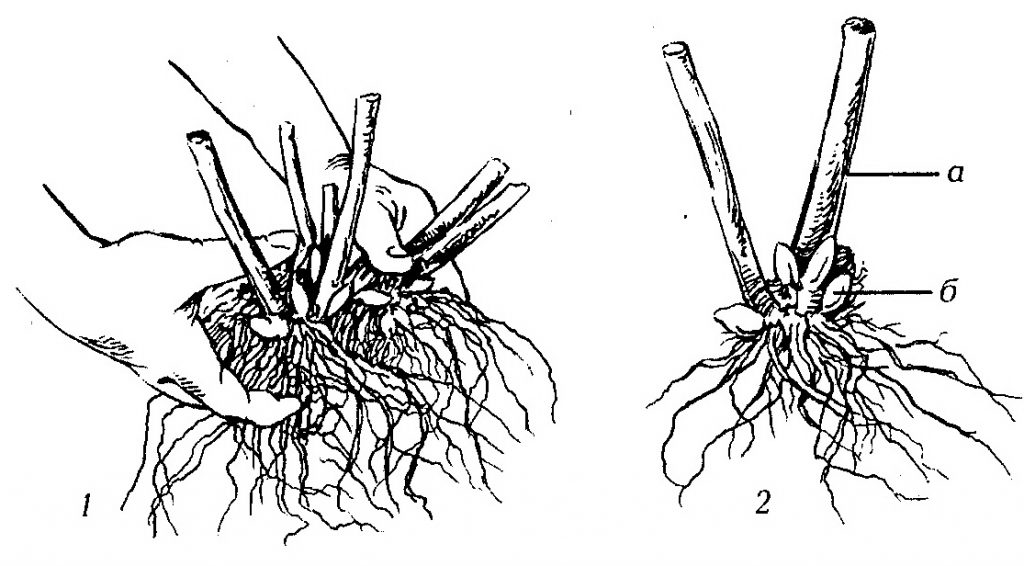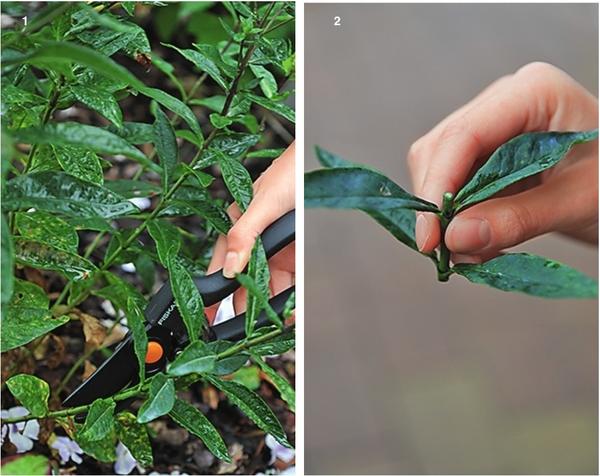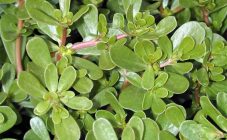Content:
Representatives of the American continent - phlox, have been popular in their homeland for more than two hundred years. They sailed to Europe in the 30s of the 18th century, and ended up in Russia in the 19th century.
Flame - translated from Greek means the word phlox, since the progenitors of the current phlox were fiery red. In the fire, upon close examination, you can see the whole diverse range of flowers of this plant.
Its shades are the most diverse: from white to pale pink; from lilac to bright crimson. Flowers of blue and deep lilac color complete the palette. Today only yellow phlox is missing. If you plant various types of plants on your site, you will have a blooming garden from May to October.
The main varieties are maculata and paniculata, which differ in the shape of the inflorescence. They are the ancestors of a significant part of modern varieties and hybrids. Distinctive features of spotted phlox are small burgundy specks and strokes on the stem and the pyramidal shape of the inflorescences.
Phlox Natasha is interesting for the story of her origin. The first mention of this plant dates back to 1967. Reliable information about the presence of the phlox Pestrushka in the collection of the USSR Academy of Sciences has been preserved. This was its very first (temporary) name. The name was given to him by S.M. Udintseva is a researcher at the Academy of Sciences, where this flower was born, like a bud mutation of spotted phlox. In 1984 L.A. Polyakova, curator of the phlox collection of the Academy of Sciences, first demonstrated a flower called Sonata at the phlox exhibition.
In the 90s of the last century, in the Minsk Botanical Garden, the flower was known under its first name Pestrushka, with which it arrived in Belarus from the Academy of Sciences. In 1989, the Dutch florist Luke Klinkhamer came there. Struck by the singularity of this plant, he took several specimens home. In the Netherlands, an enterprising collector registered and patented it under a new name - Natascha. So the flower found its third name - Natasha, in honor of the Minsk curator of the collection Natalia Lunina, who passed on the plant. A new phlox with Russian roots blossomed in Europe.
Description of phlox Natasha
Phlox Natasha is a perennial plant, 70 cm high, bush width - 40-50 cm, with a strong root system and thin but strong vertical stems.
The flower is 2 cm in size, curious for its coloring - white with a lilac-crimson stroke in the middle of the petal. The inflorescence is elongated, oval-conical in shape. Leaves are not typical for phlox configuration: small, narrow and short.
Blooms from late June to autumn.
Decorative flower Natasha has a number of positive characteristics.
The main advantages of the variety:
- early and long flowering;
- tolerates partial shade well;
- moisture resistant;
- grows quickly on moist soils;
- frost-resistant.
These properties make it possible to plant it under trees and near water bodies.
Agrotechnics
Phloxes love the sun, but they burn out from its rays. Therefore, when choosing a site for them, preference is given to semi-shaded places. Planting phlox should be well protected from strong winds, otherwise the inflorescences will suffer.
The soil should be nutritious, loose, and retain moisture well. Sandy loam and loamy soils are ideal for these plants.They feel normal on slightly acidic neutral lands, but alkaline ones are not suitable for them. To enrich the soil, it is recommended to plant green manure (white mustard).
Care
Natasha's content includes:
- watering;
- periodic weeding,
- loosening;
- feeding.
Excess and lack of nutrition are harmful to these flowers. In overfed plants, the stems begin to crack, and the inflorescences become loose. With poor nutrition, the flowering time decreases, the inflorescences become much smaller, and the color is less intense. Caring for Pestrushka begins in early spring, as soon as the flowers begin to grow. You need to monitor soil moisture and water regularly. Loosening the soil and removing weeds on time helps the flowers get nourishment from the soil.
Reproduction of phlox
Perennial phloxes are easy to breed. They reproduce by seeds and vegetatively (by plant parts). With the vegetative method, all healthy parts of the bush are used, starting with the roots and ending with parts of the stem with leaves. When dividing, all varietal characteristics of flowers are preserved.
The breeding method depends on the nature of the goal. The plant is divided for rapid reproduction of a rare and beautiful variety, to obtain a significant mass of material for planting and for recovery.
By dividing the rhizome
Spring division is carried out from late April to early May. With spring division, a lot of planting material comes out.
In autumn, the plant is divided from late August to early September, when buds appear on the root collars of the stem. This is the most favorable time for division. The seedlings root well and provide high-quality flowering in the next season.
In summer, division is used in exceptional cases, the bush is divided into large parts. After division, seedlings need careful care and shading.
Plants are divided from three years old. But it is better to take 5-6 years old bushes for dividing, they are easier to recover.
Cuttings
Phloxes are easily bred by cuttings. Preparing the soil for the various grafting methods is the same. It is better to organize a place for cuttings in partial shade. The soil should be loose, fertilized and moist. The garden bed is leveled, lightly tamped and mulched. Washed sand is suitable for mulch. Mulching inhibits the growth of weeds and helps to avoid drying out and crusting on the soil surface. It is advisable to enclose the edges of the beds with boards, this will help preserve the microclimate of the bed.
Reproduction by pieces of the stem is carried out throughout the season. The advantage of this method is that any beautiful flower you like is used. It is only necessary to wrap the plant in wet newspaper before grafting and send it to a cool place or simply put it in water. Cuttings (85-90%) planted in the first half of summer take root better.
Cuttings are taken from healthy and normally developed plants. At the beginning of summer, the entire stem is used, and at the end - only its upper part (2/3), because the lower one has already become coarse by this time. The stem is cut into cuttings with two nodes, the lower leaves are removed, and the upper leaves are slightly cut off. Cuttings are immersed in water before planting. A root stimulant can be used.
You need to do cuttings in the shade or in cloudy weather.
The shoots are planted at a distance between rows of 8-10 cm and 5-6 cm from each other. The sprout is buried in the ground to the upper node, watered, shaded and covered with a film. During the first week, seedlings are watered with warm water up to 5 times a day, then as needed. After 3-4 weeks, roots are formed on the cuttings, and the first shoots appear in the leaf sinuses.
Propagation by axillary lateral shoots is used from mid-summer to early autumn. This method is good for early varieties. After cutting the flowers, small lateral shoots are formed at the top of the stem. They are carefully broken (preferably with a heel) and planted.
Reproduction by growth shoots is possible in early spring. The sprouts should not be more than 15 cm. It is carried out together with the spring division of the bush. Cuttings are taken from bushes for 4-5 years. Shoots are neatly broken out at the base of the bush. You can select up to 40-50% of existing shoots. At the end of summer, the bushes will bloom. It is advisable to remove the inflorescences.
Phlox can be propagated in several more ways of cuttings, such as: leaf cuttings, vertical cuttings, root cuttings.
Breeding a culture, therefore, makes it possible to make the most of all parts of the plant and quickly multiply the flowers you like.
Advantages and disadvantages of the variety
What is the difference between domestic phloxes and foreign ones? Industrial varieties are being developed abroad. They can plant a park. Our varieties are distinguished by originality and beauty. These are exclusive copies, and foreign ones are in-line production.
Natasha impresses with its exuberant enchanting flowering. Its natural beauty will not leave anyone indifferent. The original color and shape are impressive at first sight. Unpretentious in care and easy to propagate, this flower will certainly take its rightful place in any garden.
The only drawback of the plant is the small size of the flowers. For this reason, it is a little lost next to bushes of other large-flowered varieties. In this case, it is used as a covering plant.
In any form, it will delight with powerful and long flowering. Its delightful scent will fill the entire garden. Pestrushka, Natasha, Sonata, no matter how you call this flower, it will become a real decoration and will bring true pleasure.
